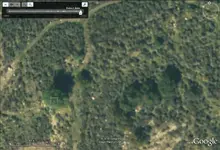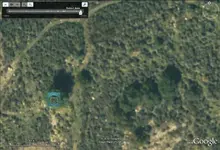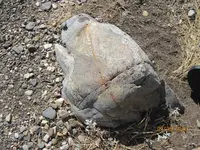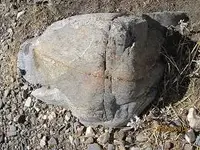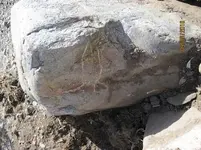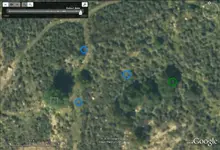Hey Walt…Sorry I forgot about the left hand right hand….some say to hold the rod in the hand with the minis charge…I don’t know if that is correct or not….Here is an old article someone send me years ago. There are some interesting points in it
FINALLY NEW SCIENTIFIC EVIDENCE BEHIND DOWSING
________________________________________
________________________________________
Divining rods and all common dowsing devices, are the simplest forms of electroscopes. The bent rod for example is just a variation of Gilbert's straw needle electroscope.
The divining rods are charged with static electricity from the dowser's own body. This static electricity can be seen quite adequately with a simple millivolt meter. This voltage is measured between the hands of the dowser, to measure this voltage accurately a diff amp should be used at the input to the voltmeter, "this eliminates stray signals which are common to both hands". The amount of voltage will vary depending on the person. A good dowser will have a high reading, "above 100 mv" while a poor dowser may read as low as,"0 mv.". For males the right hand is usually a negative polarity, and the left hand is positive in polarity. These polarities are usually reversed in females.
The divining rod charged positively will rotate in the dowsers hand to line up parallel to a negatively charged object being dowsed. A divining rod charged negatively will remain perpendicular to a negatively charged object being dowsed. This is because like charges repel, while unlike charges attract. Thus both bent divining rods are not required for dowsing. When two divining rods are used, and they are seen to cross, one of the rods is being moved to line up parallel with the charged object being dowsed. The other rod is moving to line up parallel to the first rod. A second reason for the two rods crossing is that of dowsing over an alternating current source, such as a pipeline or buried cable. these are usually buried shallow and are conducting ground currents as the path of least resistance.
The above statements can easily be proven by, dowsing over negatively and positively charged objects. The devices used in my experiments were, a rubber rod rubbed with cat fur to produce the positive charged object, while a glass rod rubbed with silk was used to produce the negatively charged object.
The reason conventional devices cannot detect these positive and negative charges, is probably because of the array in which the charged object gives off it's lines of force in all directions. Most instruments being omnidirectional devices would not pick up the small incremental changes in voltage along the earth’s surface. But the bent divining rods being unidirectional devices, can only turn to line up parallel to the charged object, when they are directly above the charged object.
The willow crotch is another type of dowsing device, this divining rod begins to pick up an attraction to the charged object prior to reaching the object, having it’s greatest amount of pull directly over the object. After dowsing with the willow crotch , the crotch itself can laid down and dowsed with the bent rods, which will indicate a charge left on each arm of the crotch, one positive and one negative.
A metallic pendulum attached by a wire will take on the charge of the hand it is being held by. A pendulum held by a nonconductive string will take on the charge of the last hand which held the pendulum. The pendulum when rotating above an object of a similar charge will continue to rotate and eventually swing back and forth perpendicular to the object. This pendulum when rotating above an object of the opposite charge will start to swing back and forth parallel to the object being dowsed. Caution here when dowsing an object you have touched the object will usually take on the charge of the last hand that touched it. This can be demonstrated by dowsing over an object such as a table knife depending on which hand touched the knife last an opposite reaction of the dowsing device will be seen.
Another interesting phenomenon
To discover the depth of a water stream underground some dowsers use a long rod, made of either iron or a fresh cut poplar pole. This pole is held by one end near the located underground stream, the other end of the rod is allowed to oscillate up and down directly over the stream. The number of oscillations are counted and this is the approximate number of feet below the earth where the water will be found.
This action can also be demonstrated, by realizing that the rod is just a pendulum working in a vertical plane rather than a horizontal one. To duplicate this action a charged object can be placed on a table, by having a pendulum swing back and forth, a few feet away, and in the same horizontal plane the number of oscillations can be counted. By moving the pendulum closer or farther from the object the number of oscillations will decrease or increase. When this is graphed, number of oscillations vs. distance, a straight line graph will be observed. By varying the length of the wire on the pendulum, the slope of the line will vary. My theory here is that a static electric wave or pulse is being sent to the object being dowsed, this charge is being reflected back from the object being dowsed, when it reaches the pendulum again as the same charge it stops the oscillations, since like charges repel.
Giel Dutoit of South Africa sent me info on a discovery he had made. If you place a 250k ohm potentiometer between the dowsers hands as he is dowsing. You will see a decrease in his dowsing ability as this resistance is decreased to a zero ohms. In testing this I have also found it to be valid. Giel can be contacted at
gieldutoit@hotmail.com
The significance of these finding are overwhelming . The applications in which dowsing has been used is HUGE. When all of these applications have been explored scientifically Mankind will take another leap forward.
 I have read a few books on dowsing and how to make my own, I have two sets of rods one being 12" long and the other 14" long and both work very well, I test them about every night in doors and out.
I have read a few books on dowsing and how to make my own, I have two sets of rods one being 12" long and the other 14" long and both work very well, I test them about every night in doors and out.



